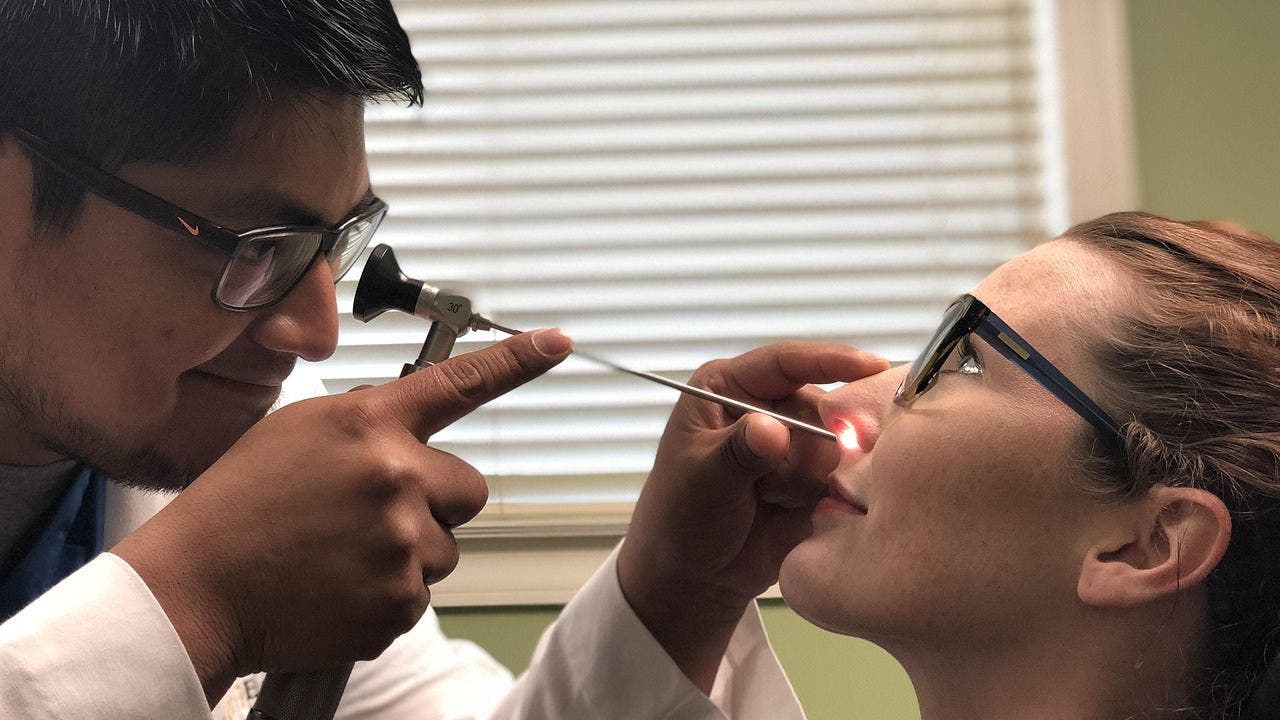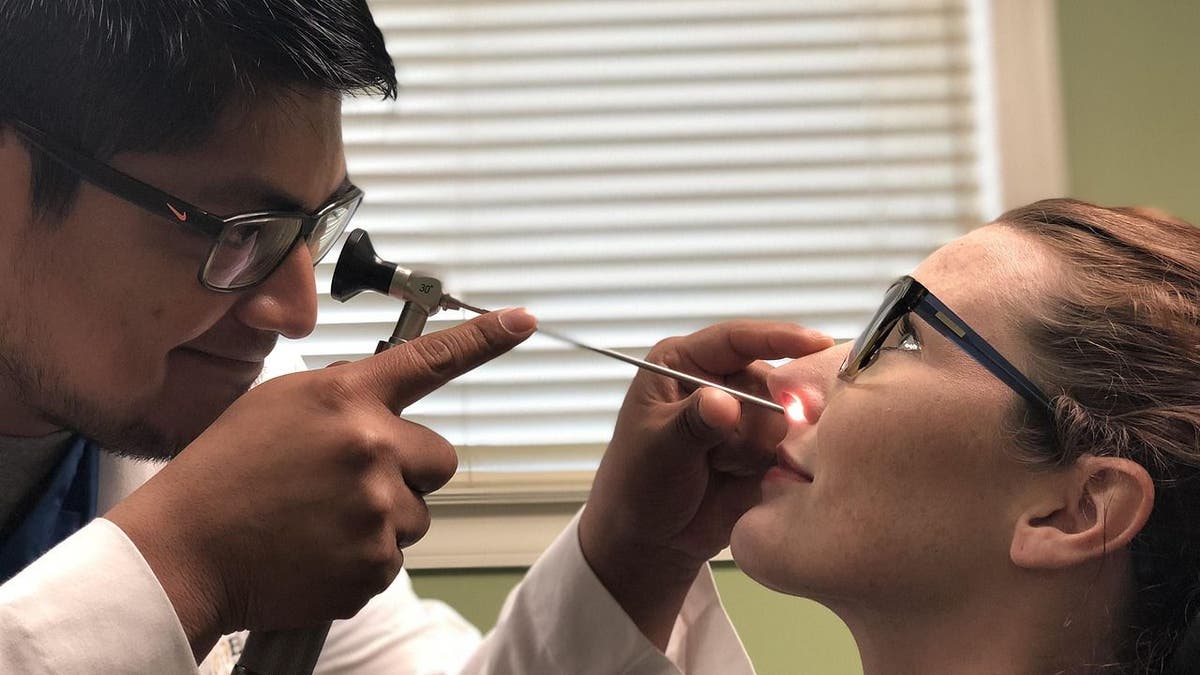I’ve played around with a few DJI drones over the years but always found them to be too cumbersome to master and use spontaneously. The $349 HoverAir X1 from Zero Zero Robotics is different. This so-called “selfie drone” is so easy to use that it’s already an indispensable tool for my work and play, right out of the box.
Technology
The HoverAir X1 is the first drone I want to use all the time
/cdn.vox-cdn.com/uploads/chorus_asset/file/25556630/IMG_8670.jpeg)
For example, the HoverAir X1 is responsible for this review photo, this 360-degree GIF, and this overhead shot, as well as all of the follow, orbit, and zoom in / out shots used in this e-bikepacking video and this ID Buzz e-camper review. Each shot was made with just a touch of a button on the top of the drone — no controller required.
The best drone is the one you have with you and the ultra-lightweight HoverAir X1 can easily fit inside a pocket to be taken everywhere. It launches so quickly that I can impulsively grab a more interesting drone shot instead of just defaulting to my iPhone. It returns automatically to land in your hand.
The HoverAir X1 is not without limitations, and I did manage to break one review unit after falling on it. But I have to admit I love this little guy precisely because of its shortcomings, not in spite of them.
The HoverAir X1’s flying weight is about half that of DJI’s sub-250g Mini drones, so it, too, is exempt from registration and licensing requirements in most countries. It folds up into a 5 x 3.4 x 1.2-inch (127 x 86 x 31mm) package that’s so small and lightweight that I could comfortably carry it in a thigh pocket on long bike rides or trail runs.
The primary user interface for the X1 is two buttons on the drone itself. One turns the unit on, and the other cycles through five presets that lock the camera onto the user as the drone completes a predetermined flight path, shooting video or taking photos along the way:
- Hover — floats in fixed space and tracks your movement
- Follow — flies behind or in front of you at different heights and distances
- Orbit — makes a wide circle overhead around a fixed center spot
- Zoom out — flies away and up and then back in
- Bird’s eye — for top-down shots directly over a fixed spot
There’s also a sixth mode that lets you assign a lightly customized flight pattern. The hover and follow modes can record videos or take photos for several minutes at a time, while the other flight modes begin and end at the point of launch and last for about 30 seconds.
The HoverAir app lets you tweak each of its automatic flight modes, including the altitude, distance, swapping between photo or video captures, portrait or landscape, and image quality. After some early experimentation to see what I liked, I rarely had to adjust these again.
In a metric I like to call “time to drone,” I can pull the X1 out of a pocket, unfold it, turn it on, select a predefined flight path, and set it aloft from an outstretched palm in less than 20 seconds. No DJI drone can come anywhere close.
That’s not to say that the HoverAir can compete with DJI’s consumer drones on features or capabilities. The X1’s diminutive size means compromises were made, starting with a max video resolution of 2.7K/30fps.
Shots also start looking a little shaky in light winds around 10 knots (5.1m/s), and the X1 can’t even fly once winds exceed a moderate 15 knots (7.7m/s). It’s also relatively slow. The X1 can track me fine on a trail run, but it’ll start losing its object lock when I’m road biking at a not-very-fast pace of just 12mph (20km/h). Even when it can keep up, it’ll lose me when the elevation changes rapidly on a steep climb or descent.
Otherwise, the X1’s computer vision tracking is very good — it’s the main reason you’d buy this drone. But when it does lose track of me for whatever reason, it’ll just stop, hover in place, and then eventually land, even over water or a busy street. There is no return-to-home feature to ensure a safe landing and recovery. It can, however, be configured to play a sound to help find it.
The X1 also lacks any obstacle avoidance. Instead, the drone’s four rotors are encased in a flexible plastic cage to protect the device from collisions. In most flight modes, the lack of avoidance tech isn’t really a problem so long as you give the immediate area a quick survey. It becomes an issue when the drone is in follow-me mode through narrow tree-lined trails, for example, or when walking around a sharp corner inside my home. Usually, it’ll just stop and hover in place if it runs into something, meaning I’ll have to double back to re-engage the tracking lock on my person or to collect it. But if it hits something when going faster — like chasing me on a bike — it’ll crash. My review X1 has already survived a few dozen crashes that sent it plummeting to the ground. It’s fine, other than a few scuff marks.
I did destroy another X1 when my full weight landed on it while testing some new clipless bike pedals (don’t judge!). The X1 is not indestructible, but it’s surprisingly robust for such a lightweight drone.
1/10
The HoverAir X1 also lacks any kind of advanced GPS positioning. Instead, it opts for a VIO (Visual Inertial Odometry) system to estimate its position in 3D space, indoors or out, so that its preset flight modes can return the drone to its original starting point. It worked very well in my testing, often living up to the HoverAir’s claim of “centimeter-level precision,” even when flying orbits around me with a 20-foot (six-meter) radius.
The drone also responds to a variety of hand gestures when the user is standing still. For example, you can send the X1 left or right with a wave of an arm or tell it to land with your arms crossed overhead. You can also just grab the drone out of the air and flip it upside down to turn those protected rotors off.
The HoverAir X1 does offer a manual Wi-Fi-connected flight mode whereby your phone becomes the controller. It’s fun, but I found it unresponsive at times, making it difficult to control flight with any real precision. I consider it a bonus feature you might want to use in a pinch.
The X1 is limited to 32GB of built-in storage without any option for microSD expansion. I’m currently using just 8.8GB to store the 113 videos and 60 images I’ve shot at max resolution over the last few months of testing. The footage transfers quickly to a phone over a direct Wi-Fi connection using the HoverAir app or over USB-C to a laptop. That USB-C connection will also charge the X1’s battery in about 55 minutes.
On paper, the X1 is dumb and unremarkable. But the HoverAir is so good at doing what many people actually need from a drone that its shortcomings rarely matter at all.
DJI is still the king of sweeping panoramas, but the HoverAir X1 makes a strong case for being the drone you choose to capture yourself doing things — indoors and out — especially for social media.
I do wish it was more capable so I could trust it to capture action over water when kitesurfing on windy days, keep up with me when road cycling at pace, or maintain its object lock when I’m bombing down a steep hill on a mountain bike. A 4K/60fps shooting mode would also be nice so long as none of these wishes increase the price too much.
The X1 does 90 percent of what I want a drone to do
Still, the X1 does 90 percent of what I want a drone to do without adding GPS, obstacle avoidance sensors, and a physical controller that’ll just make everything more expensive, more complicated, more cumbersome to carry, and slower to launch. Maybe DJI’s rumored Neo will fill in that last 10 percent because it certainly looks like a response to the HoverAir hype.
The HoverAir X1 lists for $429, but it’s nearly always on sale somewhere, often at or below $350. But I’d recommend opting for the $400-ish bundle that adds a dual-battery quick charger and two extra batteries that each only last about 10 to 12 minutes before needing a 35-minute recharge. Like the X1 itself, they’re so small and lightweight that you can easily bring them along to help document your next activity.
All photography by Thomas Ricker / The Verge

Technology
Apple’s latest AirPods are already on sale for $99 before Prime Day

Amazon Prime Day kicks off tomorrow, July 8th, but you don’t have to wait until then to pick up Apple’s latest pair of AirPods at a discount. Right now, the AirPods 4 are available for around $99 ($30 off) at Amazon, Best Buy, and Walmart, while the AirPods 4 with noise cancellation are going for around $149 ($30 off) at Amazon, Best Buy, and Walmart. That’s within $10 of the lowest price we’ve seen on the ANC model and matches the lowest price to date on the base pair.
Both versions of Apple’s current-gen earbuds feature shorter stems and larger buds than previous models, allowing them to accommodate a broader range of ear shapes. The open-style earbuds use a hard plastic body that doesn’t create a tight seal inside your ear, which means they sacrifice some bass response compared to gummy-tipped earbuds. Hardshell earbuds won’t create pressure in your ear, though, which can feel uncomfortable after listening to music for a few hours.
Overall, the fourth-gen AirPods sound better than previous models due to a custom amplifier and new acoustic architecture. Audio quality is somewhat subjective and largely depends on how the music was recorded, mixed, and mastered; however, former Verge staffer Chris Welch noted in his review that he was pleased with the sound of Apple’s latest pair of wireless earbuds. If you’re upgrading from an older pair, you’ll notice a difference.
The AirPods 4 run on Apple’s H2 chip, which is required for Voice Isolation, a feature that reduces background noise and amplifies the volume of your voice during calls. If you’re using an iPhone, you can say “Hey Siri” to evoke Apple’s smart assistant to place calls, hear and return messages, and play music. You can also locate the earbuds using the Find My app on Apple devices if they’re misplaced.
The entry-level model can last up to five hours on a single charge and can be fully charged five times using the included USB-C charging case (the ANC model also offers wireless charging). Both pairs of earbuds are also IP54-rated for dust, sweat, and water resistance, ensuring you can wear them safely during workouts. Needless to say, the AirPods 4 are excellent earbuds at their current price, whether you opt for the model with active noise cancellation or not.
Three more deals worth your time
Technology
How micro-robots may soon treat your sinus infections

NEWYou can now listen to Fox News articles!
A breakthrough in medical technology could soon change how sinus infections are treated. Scientists have created micro-robots for sinus infection treatment that can enter the nasal cavity, eliminate bacteria directly at the source, and exit without harming surrounding tissue. This drug-free, targeted approach may reduce our dependence on antibiotics.
Sign up for my FREE CyberGuy Report
Get my best tech tips, urgent security alerts, and exclusive deals delivered straight to your inbox. Plus, you’ll get instant access to my Ultimate Scam Survival Guide – free when you join my CYBERGUY.COM/NEWSLETTER.
A woman with a sinus infection. (Kurt “CyberGuy” Knutsson)
What are micro-robots for sinus infection treatment?
These microscopic robots are smaller than a speck of dust. They are made of magnetic particles enhanced with copper atoms. Doctors insert them through a narrow duct in the nostril. Once inside, the micro-robots are guided by magnetic fields to reach the infected area.
At that point, a fiber optic light heats the particles and triggers a chemical reaction. This reaction breaks through thick mucus and destroys harmful bacteria at the infection site. As a result, treatment becomes faster, more precise, and far less invasive.
This latest advancement comes from a collaboration of researchers at the Chinese University of Hong Kong, along with universities in Guangxi, Shenzhen, Jiangsu, Yangzhou, and Macau. Their work, published in “Science Robotics,” has helped move micro-robotic medical technology closer to real-world applications.
Why use micro-robots instead of antibiotics?
Traditional antibiotics circulate throughout the entire body. In contrast, micro-robots target only the infected area. This reduces side effects and lowers the risk of antibiotic resistance. Furthermore, patients may recover faster because the treatment goes straight to the source.

A woman with a sinus infection. (Kurt “CyberGuy” Knutsson)
Are micro-robots safe?
So far, animal trials have shown promising results. Micro-robots successfully cleared infections in pig sinuses and live rabbits, without causing tissue damage. However, scientists still need to ensure that every robot exits the body after treatment. Leftover particles could pose long-term risks.
In addition, public acceptance remains a challenge. The idea of tiny machines inside the body makes some people uncomfortable. Nevertheless, experts believe those fears will fade over time.
What other uses are possible?
Researchers are already exploring how micro-robots could treat infections in the bladder, stomach, intestines, and bloodstream. Several teams around the world are working to make the technology more advanced and adaptable for deep internal use. If successful, these innovations could revolutionize the way we fight bacteria in the human body.

A doctor examining a woman with a sinus infection. (Kurt “CyberGuy” Knutsson)
Kurt’s key takeaways
The rise of micro-robots for sinus infection treatment marks a major shift in medical care. By offering precise, non-invasive therapy without antibiotics, this method could redefine how infections are treated. With continued research and testing, these tiny tools may soon become powerful allies in modern medicine.
Would you let microscopic robots crawl through your sinuses if it meant never needing antibiotics again? Let us know by writing to us at Cyberguy.com/Contact.
Sign up for my FREE CyberGuy Report
Get my best tech tips, urgent security alerts, and exclusive deals delivered straight to your inbox. Plus, you’ll get instant access to my Ultimate Scam Survival Guide – free when you join my CYBERGUY.COM/NEWSLETTER.
Copyright 2025 CyberGuy.com. All rights reserved.
Technology
Cyberpunk Edgerunners 2 will be even sadder and bloodier

The new season will be directed by Kai Ikarashi, who also directed episode six in the first season, “Girl on Fire.” There’s no word yet on when Cyberpunk: Edgerunners 2 will premiere, but they did show off this new poster artwork. A trailer will be shown later tonight during a panel at 8:30PM PT for the animation studio, Trigger.
Showrunner and writer Bartosz Sztybor said during Friday’s panel that for season one, “I just wanted to make the whole world sad… when people are sad, I’m a bit happy,” and that this new 10-episode season will be “…of course, sadder, but it will be also darker, more bloody, and more raw.”
A brief summary of the follow-up series tells fans what to expect following the end of David’s story in season one:
Cyberpunk: Edgerunners 2 presents a new standalone 10-episode story from the world of Cyberpunk 2077— a raw chronicle of redemption and revenge. In a city that thrives in the spotlight of violence, one question remains: when the world is blinded by spectacle, what extremes do you have to go to make your story matter?
-

 News1 week ago
News1 week agoHow Every Senator Voted on the Iran War Powers Resolution
-

 Politics1 week ago
Politics1 week agoTrump's 'big, beautiful bill' faces Republican family feud as Senate reveals its final text
-

 Technology1 week ago
Technology1 week agoFacebook is starting to feed its Meta AI with private, unpublished photos
-

 Health1 week ago
Health1 week agoWhy Mariah Carey Doesn’t Use a Scale After Her 70-Lb Weight Loss
-
World1 week ago
Tech industry group sues Arkansas over new social media laws
-

 Science1 week ago
Science1 week agoAfter U.S. and Israeli Strikes, Could Iran Make a Nuclear Bomb?
-

 Business1 week ago
Business1 week agoCalifornia lawmakers approve expanded $750-million film tax credit program
-

 Politics1 week ago
Politics1 week agoSchumer to force Senate reading of Trump's entire 'big, beautiful bill'














